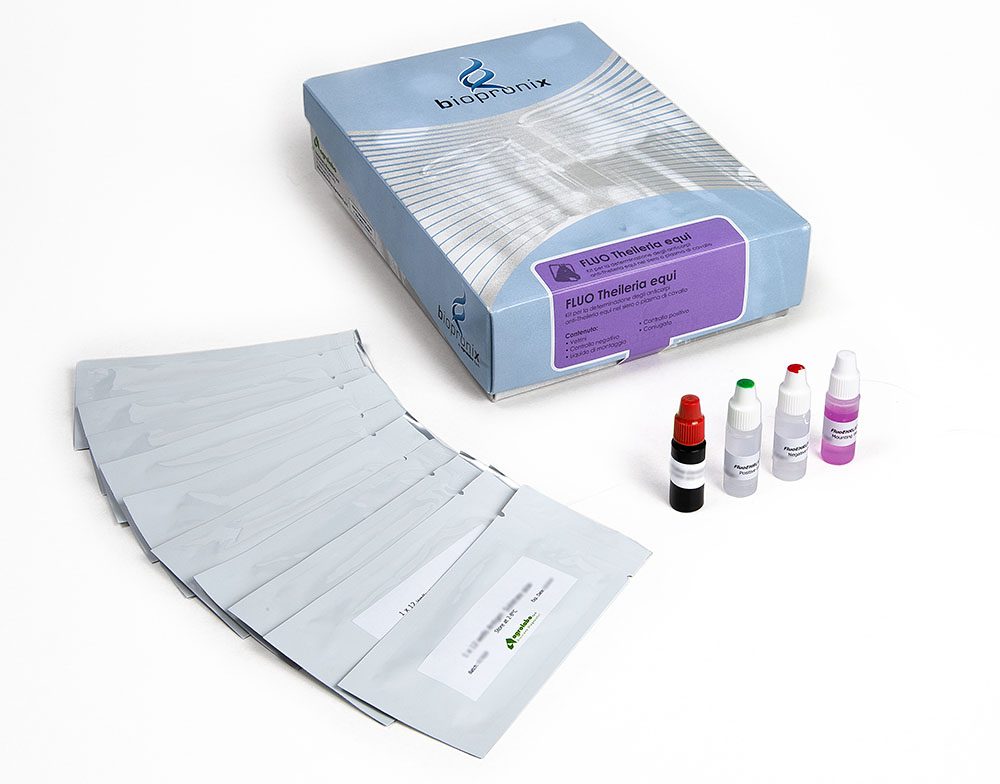FLUO THEILERIA equi
IFA kit for the detection of anti-Theileria equi IgG antibodies
Fluo THEILERIA equi is a test based on the immunofluorescence technique for the detection of anti-Theileria equi IgG antibodies in horse serum or plasma samples.
Theileria equi is a protozoan that causes equine piroplasmosis. The disease is vector-transmitted through inoculation by ticks, but it can also be transmitted iatrogenic or transplacental. The disease is widespread even if there are free areas (Australia, USA, Canada, Japan, Great Britain and Ireland), but it is found with increasing frequency. The disease, whose cycle is linked to that of ticks, is seasonal, mainly spring.
Theileria protozoa are intracellular parasites which, after initially penetrating (3-13 days) inside the lymph node lymphocytes, are localized in the red blood cells, causing them to rupture with consequent anemia. The clinical forms can be acute, subacute or chronic, the latter often presenting in an inapparent form. Very frequently there is also an asymptomatic form that manifests itself clinically only following stress. The horse is therefore a healthy carrier of the disease and remains so for life. The occurrence of one of the three forms depends on previous contacts with the parasite.
Theileria equi can also be transmitted transplacental way and is possibly cause of abortions and neonatal piroplasmosis. Theileria equi has smaller dimensions than Babesia and gives rise to four individuals who arrange themselves to form the so-called Maltese cross and is therefore more aggressive. In fact, unlike B. caballi, hyperthermia is often less important among its symptoms but the anemia is more pronounced. Jaundice is more common but hemoglobinuria may be missing. Sometimes it is possible to observe acute forms with mortality in a few days.
In suspicion of piroplasmosis it is very important to distinguish the species Theileria equi and Babesia caballi, among them, because Theileria equi induces more serious infections and is more resistant to treatments, even if co-infection is often possible.
